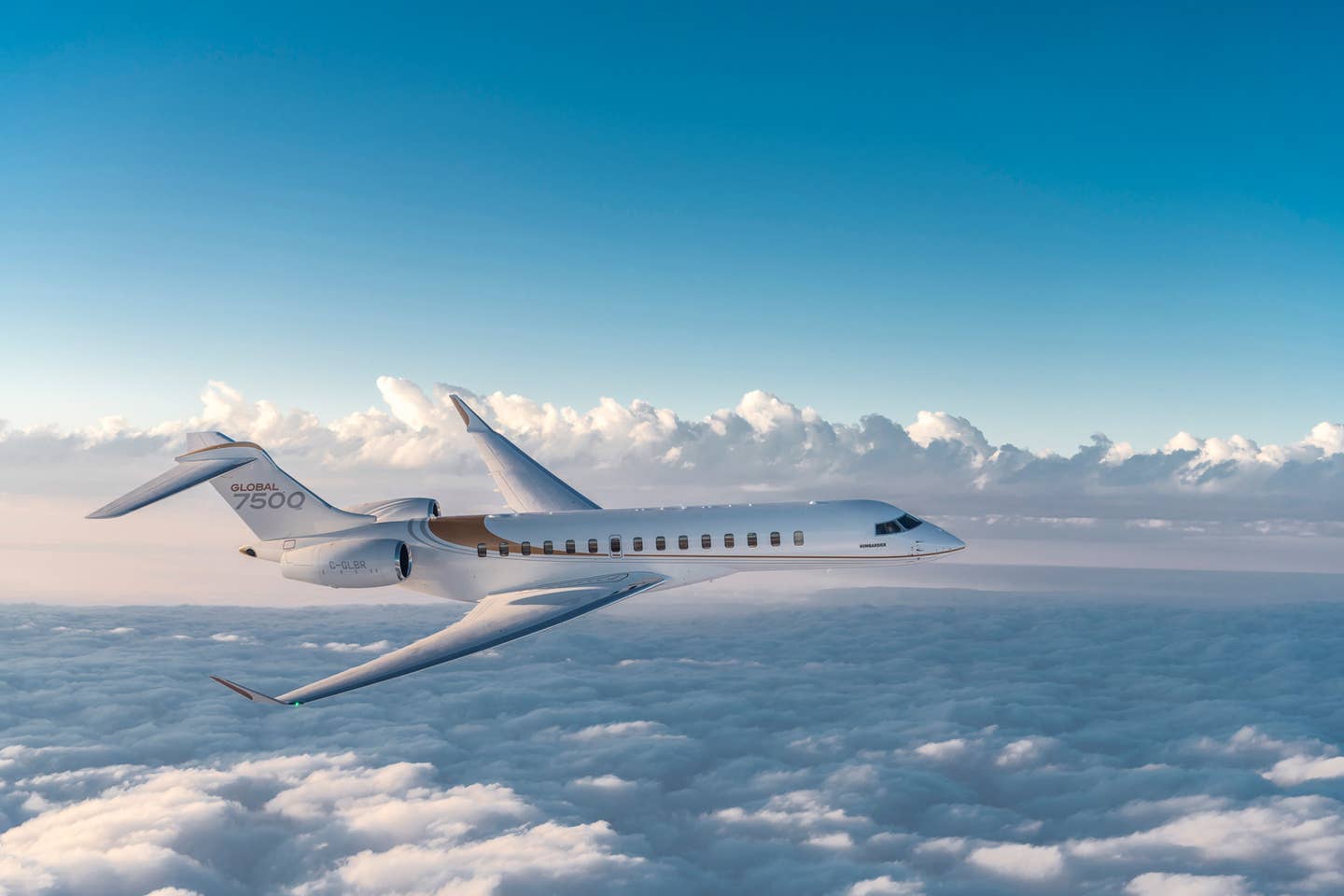
The Bombardier Global 7500 with GE Passport engines recently completed a milestone flight from Sydney to Detroit.
While many pilots know General Electric as a company with significant history—it was founded in 1892—they may not realize that GE’s Aviation division just celebrated 100 years in 2017. Its first product, in July 1919, was a supercharger for the then-popular Liberty engine. The division evolved to the point that by 1937, while it installed superchargers on the Boeing B-17, its first jet engine was in development.
Today, GE Aviation counts several key projects in its current programs, including the first supersonic engine in decades, called the Affinity, and slated for for the Aereon project, announced in October 2018—as well as the GE Honda HF120 turbine engines on the HondaJet (also available as a retrofit via Sierra Industries on the Cessna Citation CJ1). In a press conference at NBAA-BACE in late October, Brad Mottier, GE Vice President and General Manager for Business and General Aviation & Integrated Services, gave updates on these as well as on the GE Passport turbofan engine (powering the Bombardier Global 7500) and the Catalyst turboprop engine, under development in parallel with Textron Aviation’s new Cessna Denali.
Mottier reported that the Passport has now surpassed 8,000 flight hours, with fuel burn and noise reduction performing “to spec out of the box.” The Global 7500 recently marked a long-distance city-pair milestone, flying from Sydney to Detroit on October 22, a distance of 8,225 nm. The demonstration Global 7500 flew into NBAA-BACE on sustainable aviation fuel (SAF), and the engine is able to utilize all five of the currently-approved synthetic pathways to jet fuel.
The GE Catalyst continues to march towards certification, which Mottier termed “the most extensive certification testing program [we’ve] ever [accomplished] for a turboprop.” The engine had completed 1,600 hours of testing, using five test engines, with two to be completed in 2019. The Catalyst features fully integrated prop and power controls (FADEC). FAA now requires eight new tests for this engine class, with Catalyst the first clean-sheet turboprop to come to the business and GA market in the last 50 years. Mottier reported those tests have proven more difficult, including far more stringent tests under icing conditions. “It’s absolutely clear that we meet or exceed all performance metrics for the engine,” said Mottier. The company expects the first flight to take place early in 2020, in partnership with Czech Technical University on a twin-engine testbed, leveraging the company’s production facility in Prague, Czech Republic, but using its FAA ODA (organizational designation authorization). GE Aviation plans to deliver test engines to Textron Aviation after those tests.
GE Aviation’s Digital Group also announced its fleet-wide connectivity partnership with Bombardier at the show, which will enable GE Aviation to make the first steps to power Bombardier’s cockpit and cabin Smart Link Plus connected aircraft program. This includes the development of the Smart Link Plus box, a health monitoring unit able to generate critical data for customers and enable faster return-to-service timeframes.

Sign-up for newsletters & special offers!
Get the latest FLYING stories & special offers delivered directly to your inbox






